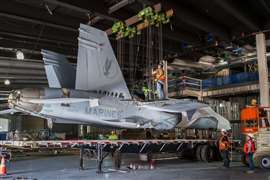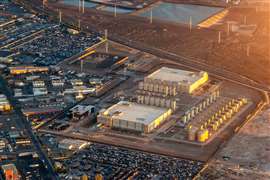50 years of International Construction part 6 - the 1980s
17 July 2012

The pages of iC documented a wave of major transport and energy projects around the world during the 1980s - a pivotal decade for globalisation.
It was also a period punctuated by both natural and man-made disasters, including the eruption of Mount St Helen's in the US in 1980, the Chernobyl nuclear accident in the Ukraine (then the USSR) in 1986 and the San Francisco, US, earthquake in 1989. As iC observed, all three catastrophes had world-wide ramifications, and required international co-operation in their aftermath.
In its January 1987 issue, for instance, iC reported that the Chernobyl meltdown and ensuing global distrust in nuclear power had precipitated an urgent demand for alternative sources of energy. "A shortfall of electricity has been predicted for Russia following the Chernobyl accident... construction of a third hydroelectric power station on the Vilu River to overcome an acute shortage of electricity in western Yakutia has been announced," a news story read.
But the pursuit of a sustainable global energy supply also dominated headlines in the 1980s for other reasons - it was becoming apparent that over-reliance on finite fossil fuel reserves could not last in an increasingly inter-connected and energy-thirsty world.
India, for instance, was looking to tackle its growing energy demand by making major investments in hydroelectricity thought its National Hydropower Corporation (NHPC).
Phase I of the NHPC's Chamera hydro project on the Ravi River in the foothills of the Himalayas was under construction in 1987, and the 300 MW project - budgeted to cost US$ 1 billion at that time (about US$ 2 billion at today's prices) - was lauded as an example of the government's new accelerated hydropower development programme.
GPS devices
Another crucial development during the decade involved the manufacture of devices that could take advantage of the US military's Global Positioning System (GPS) for civilian purposes.
In September 1986, iC reported on Trimble's release of its 4000A global positioning system locator - one of the first civilian receivers of its kind. The device could track up to four satellites and was accurate to within 15 m.
This was the first step into a GPS market that has since grown to have huge significance to the modern construction industry, allowing applications ranging from mm-accurate real-time machine positioning data, surveying applications and entire fleet management systems.
Meanwhile, in terms of transport, the Channel Tunnel linking the UK to France - construction of which started in 1988 - was undoubtedly one of the most significant infrastructure projects of the decade. iC covered the ups and downs of its progress in detail up until it opened in 1994.
A major talking point was the Anglo-French joint venture TML, made up of 10 contractors, which was tasked with co-operating with developer Eurotunnel to deliver the US$ 9 billion project. The project hit a variety of snags and delays, including initial problems raising finance.
In January, 1989, iC noted, "There may be those among the ranks who reflect that the client they created could turn out to be a Frankenstein monster."
The tunnel eventually opened a year later than originally planned and 80% over budget. But it had been an exercise in logistical planning on an unparalleled scope - to this day it still boasts the longest undersea portion of any tunnel in the world, at 37.9 km.
Of course, this was not the only major transport project improving international links during the 1980s - new airport, road and rail projects were popping up everywhere. In 1982 alone, iC covered major metro projects in Baghdad, Iraq; Hong Kong, China; Singapore, China; Dusseldorf, Germany; and Mexico to name just a handful.
This infrastructure drive, combined with advances in computing and communications technology, meant that the world was more inter-connected than ever before by the turn of the decade.




